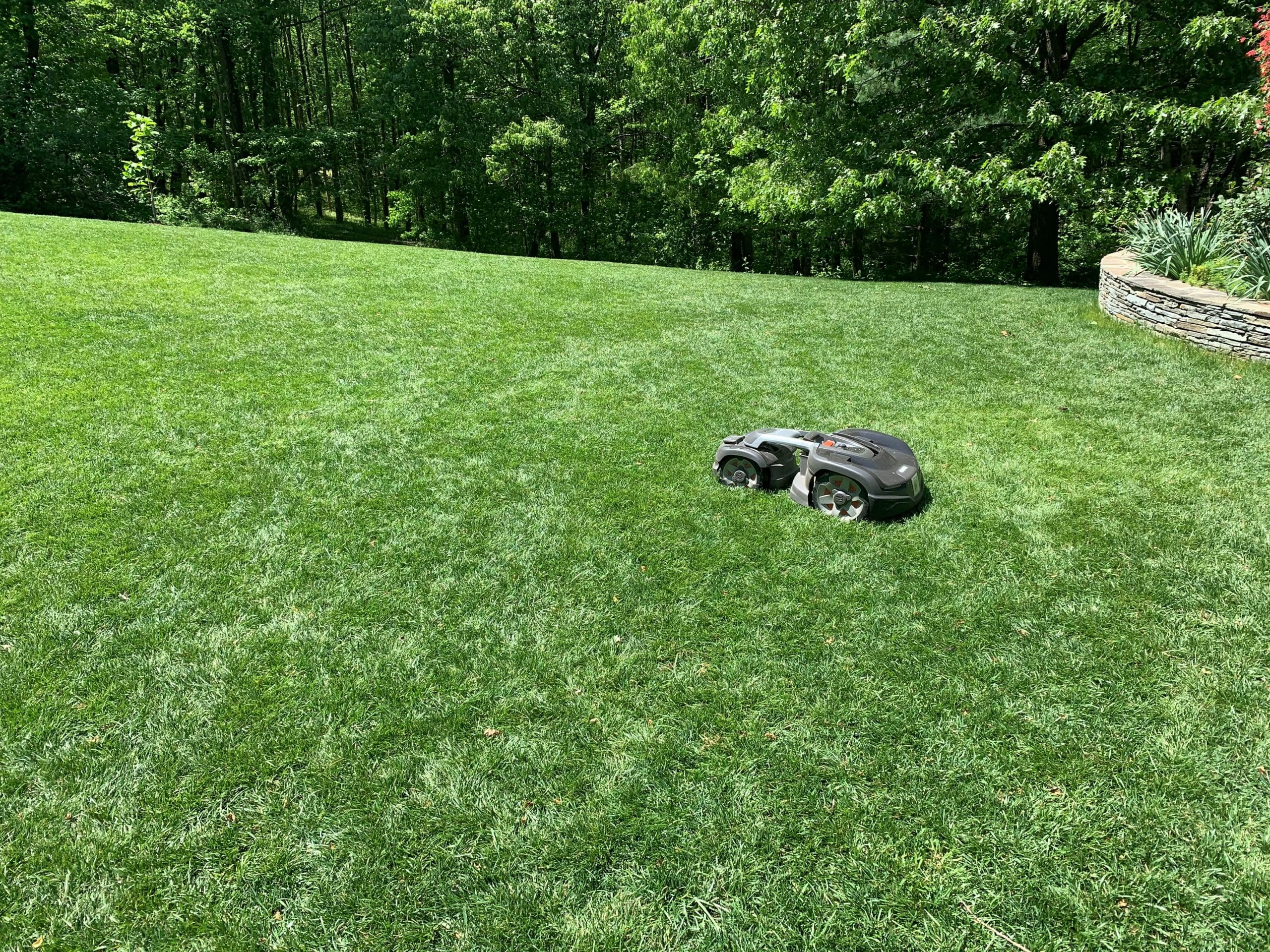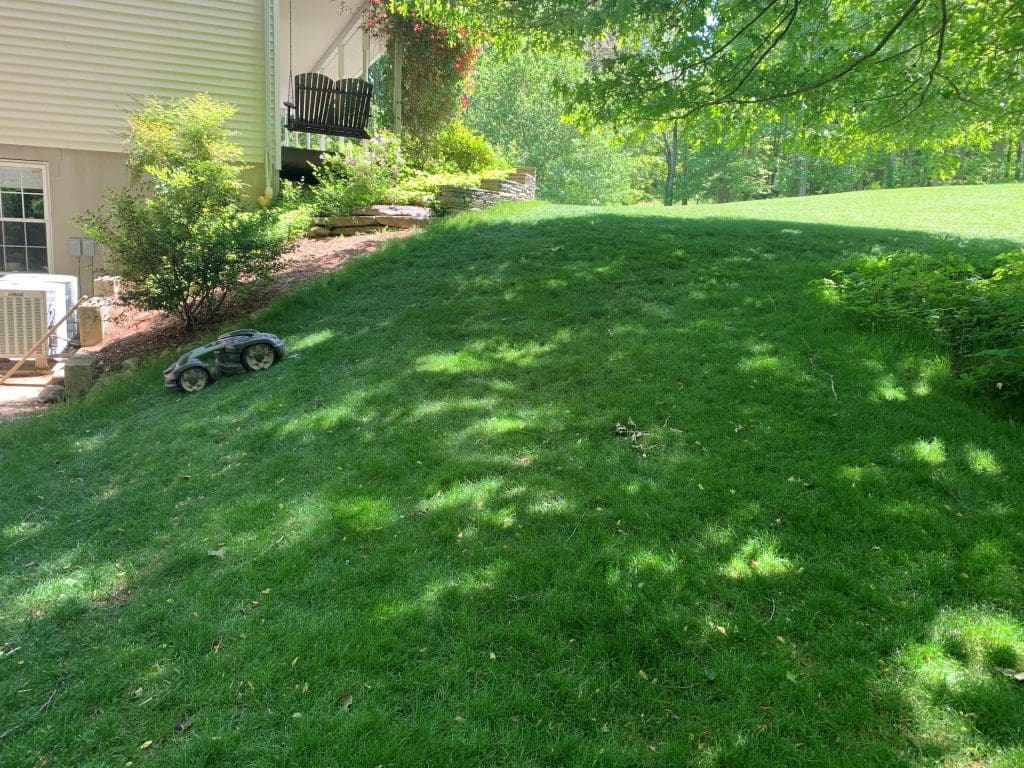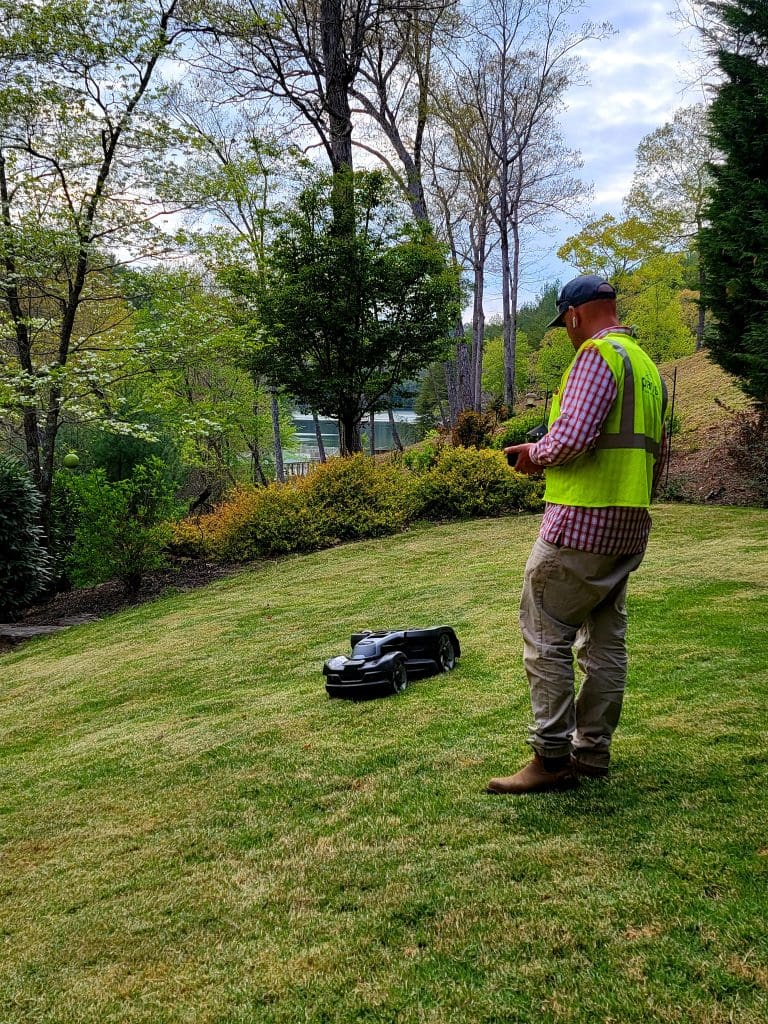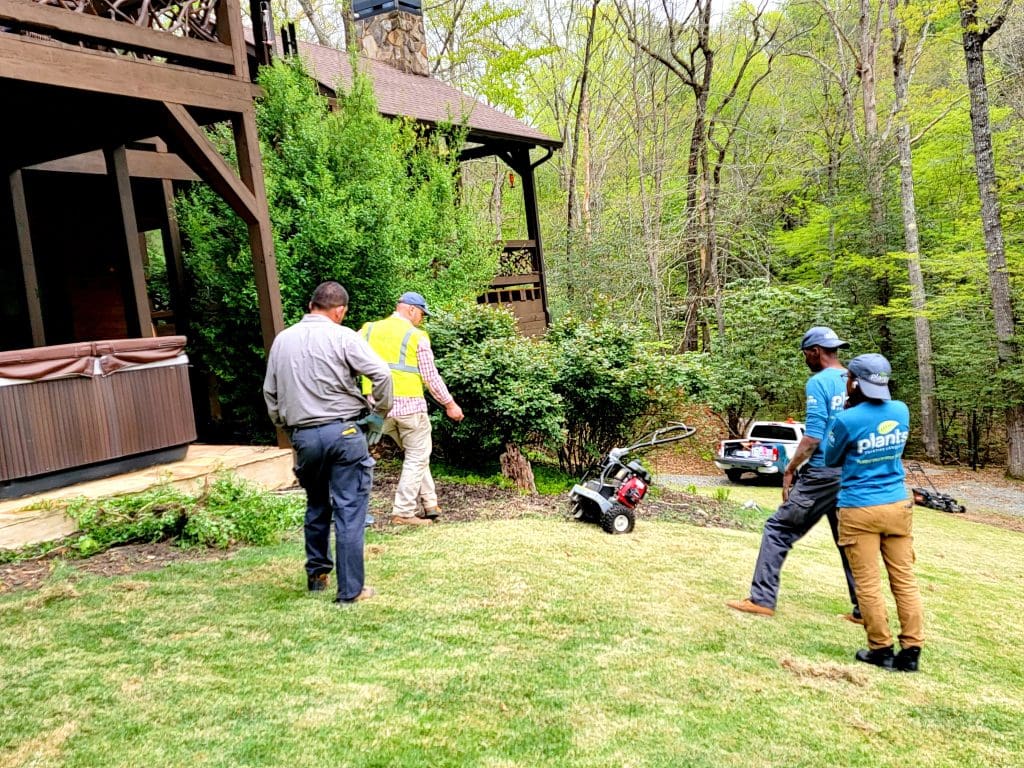
Robotic mowers have been on the scene for years now and many landscape maintenance companies have been watching and waiting to implement these machines at the right time.
Most company owners acknowledge that robotic mowers aren’t a fad and expect them to become even more prevalent in the future as their technology improves.
If you are still on the fence about integrating robotic mowers, here are some insights from some businesses that are either testing them out right now or have already implemented them into their services.
Why the Interest
Depending on who you talk to the reason why owners are taking a hard look at robotic mowers will vary. For Brad Leahy, vice president of Blades of Green, based in Edgewater, Maryland, they are always looking for another line of service they can offer customers.
“We’re not trying to necessarily reduce a labor shortage, which is what you have a lot of people trying to do, taking their existing mowing customers, and just put robots on there and reduce their labor needs,” Leahy says. “I don’t see it quite that way, we’re just looking for another package.”
Leahy has also heard that because robotic mowers are only cutting a small portion of the grass at a time, yards look better over time as they are keeping weeds from popping up above the grass. They are currently putting those claims to the test at their “Lawn Lab.”
In Yellowstone Landscape’s case, they’ve just recently decided to start testing robotic mowers as they feel the machines have developed enough that they are relevant to large-scale commercial applications.
“There’s no denying that this technology will have a role to play in the future of our industry, so we want to be a part of making sure these machines fit our needs as soon as possible,” says Joseph Barnes, marketing director for Yellowstone.
At Plants Creative Landscapes, based in Decatur, Georgia, owner Pam Dooley says they first saw the addition of robotic mowers as an employee recruiting and retention tool, attracting new people to the industry and providing additional growth opportunities for their existing employees.
“Now that we’re three years into it, in addition to recruiting and retention, we’re seeing sustainability gains with the Automowers through a reduction of gas-powered mowers as well as overall healthier lawns that require less water and supplemental nutrients,” Dooley says.
How They Help

Since adding Husqvarna’s Automowers to their operations, Dooley says they have attracted new employees and customers and they are continuing to expand their efforts in growing sustainability.
“Robotic mowers definitely deserve to be a part of the labor shortage conversation, to be seen as one part of a lot of solutions to help tackle the problem,” Dooley says.
Barnes says this is the main reason Yellowstone is looking into robotic mowers. They hope to find relief from the worsening labor shortage.
“If this technology can help us be more efficient and help fill some of the positions that we can’t find workers to fill today, it’ll be a success,” Barnes says.
Leahy says aside from being a possible additional service, robotic mowers appealed to their business as they eliminate a lot of elements people don’t like such as dust, noise and emissions.
“This is the closest thing we actually got interested in adding as a new service that would appeal to a huge part of our market,” Leahy says. “And it helps eliminate one of the biggest problems, which is people don’t mow correctly. It’s also a green service. A part of our vision is to be environmentally sustainable. Every year we try to find something we can change or do that’s more environmentally friendly than what we were doing.”
Lessons Learned So Far
Blades of Green has been researching robotic mowers for a while but they started demoing them last fall. They currently have four robotic mowers that are all different models to see how they perform. They are testing all the things that can go wrong with a robotic mower and documenting it as well as learning about the software and all the different settings.
Leahy says they’re really trying to break the machines to find out all the problems their customers might encounter.
“It’s like adding a pet to a family if you’re going to have it there at your own house to test,” Leahy says. “You got to be ready to go out when they get stuck and take care of them like puppies almost. So, there’s actually a lot more time in the learning part than you think.”

His major takeaway so far from their testing is the importance of proper installation.
“These are the three big pieces of advice: get it installed right, make sure you install it right and make sure you learn how to install them correctly,” Leahy says.
Yellowstone started looking into robotic mowers in 2018 but only started demoing them on some properties in 2020.
“The best advice we can offer is to set realistic expectations for yourself, your clients, and your team,” Barnes says. “If you go into this expecting some sort of sci-fi fantasy scenario, you’ll be really disappointed. Start with realistic goals, and make sure your whole team understands why you’re doing it and is on board with the testing before you start.”
When Plants Creative demoed the robotic mowers, they placed one at their shop and selected a handful of customers who would support the trial and error phase.
“Start with a handful of mowers on low-risk properties where you can work out the kinks,” Dooley says. “Talk with your team about the pros and cons of robotic mowers, and educate customers on the benefits, to increase buy-in. Network with others in the green industry who are using robotic mowers to share wins and losses, and to learn from one another.”
Possible Pricing Models
Plants Creative’s current business model is to do one-time installations or install them as part of their maintenance contract. Dooley says she’d like to offer service plans for the one-time installation but they’re not there yet.

Since adding robotic mowers, they are able to price their ornamental care at a higher rate in their service contracts. Dooley says their first round of robotic mowers will be paid off this year so they’ll begin to see financial returns for those units.
“Incorporating robotic mowers into fleet programs is a long-term game and requires a broad perspective and a commitment greater than immediate financial returns,” Dooley says. “Putting these mowers on our customer’s properties, allowing them to see the results, pays off financially through enhancement sales.”
Leahy says their rough business model right now is to carry the cost of the installation fee and they would charge customers a monthly fee that would include trimming and winter storage costs and Blades of Green would own the machine. They’re also considering a deposit or a small installation fee to help offset the labor and material costs of the installation.
Blades of Green is currently looking at profitability models of how many robotic mowers they would need to have and how to best store the mowers in the winter to protect their batteries.
“They tell you here’s how much the unit costs and here’s how much it should cost to install it, but there are still additional costs,” Leahy says.
The Future
“Robotic mowers won’t replace regular mowing crews for a very long time, if they ever will because not every property is a good property for a robotic mower,” Leahy says. “There’s a lot of limitations on the robotic mowers.”
Barnes agrees that autonomous mowers won’t replace employees but will just be one part of a larger crew. Leahy believes in the future landscapes will be designed with robot mowers in mind eliminating the need for edging and trimming.
“It is the future,” Leahy says. “It is going to be a big part of the future. The more people that are involved in it now, the better the products are going to get in the future. The next generation of these things is probably going to be pretty awesome.”
This article was published in the July/August issue of the magazine. To read more stories from The Landscape Professional magazine, click here to subscribe to the digital edition.

